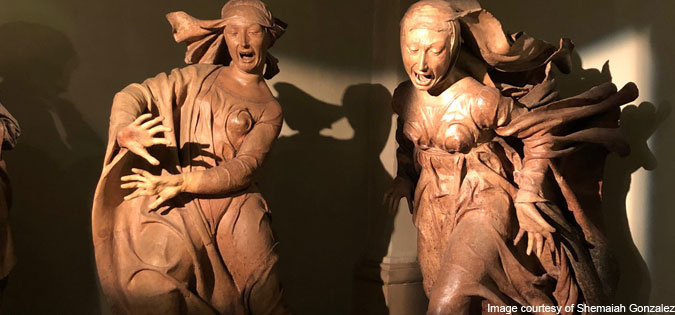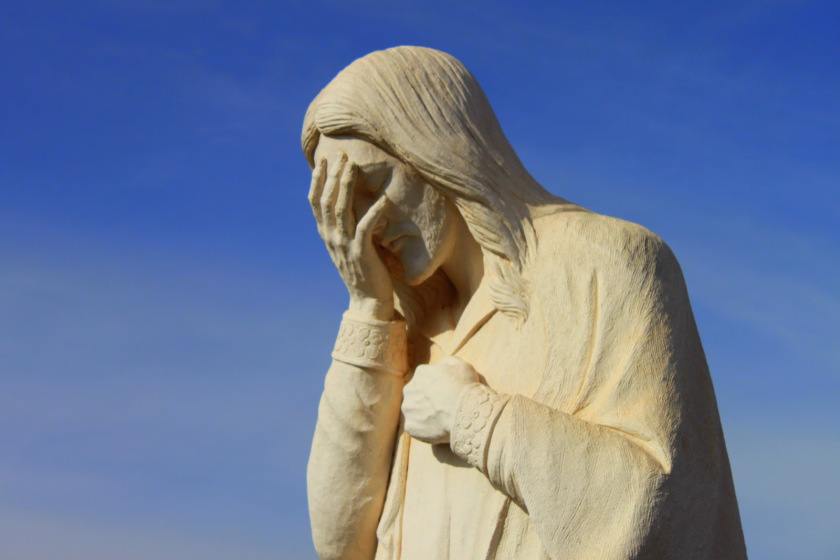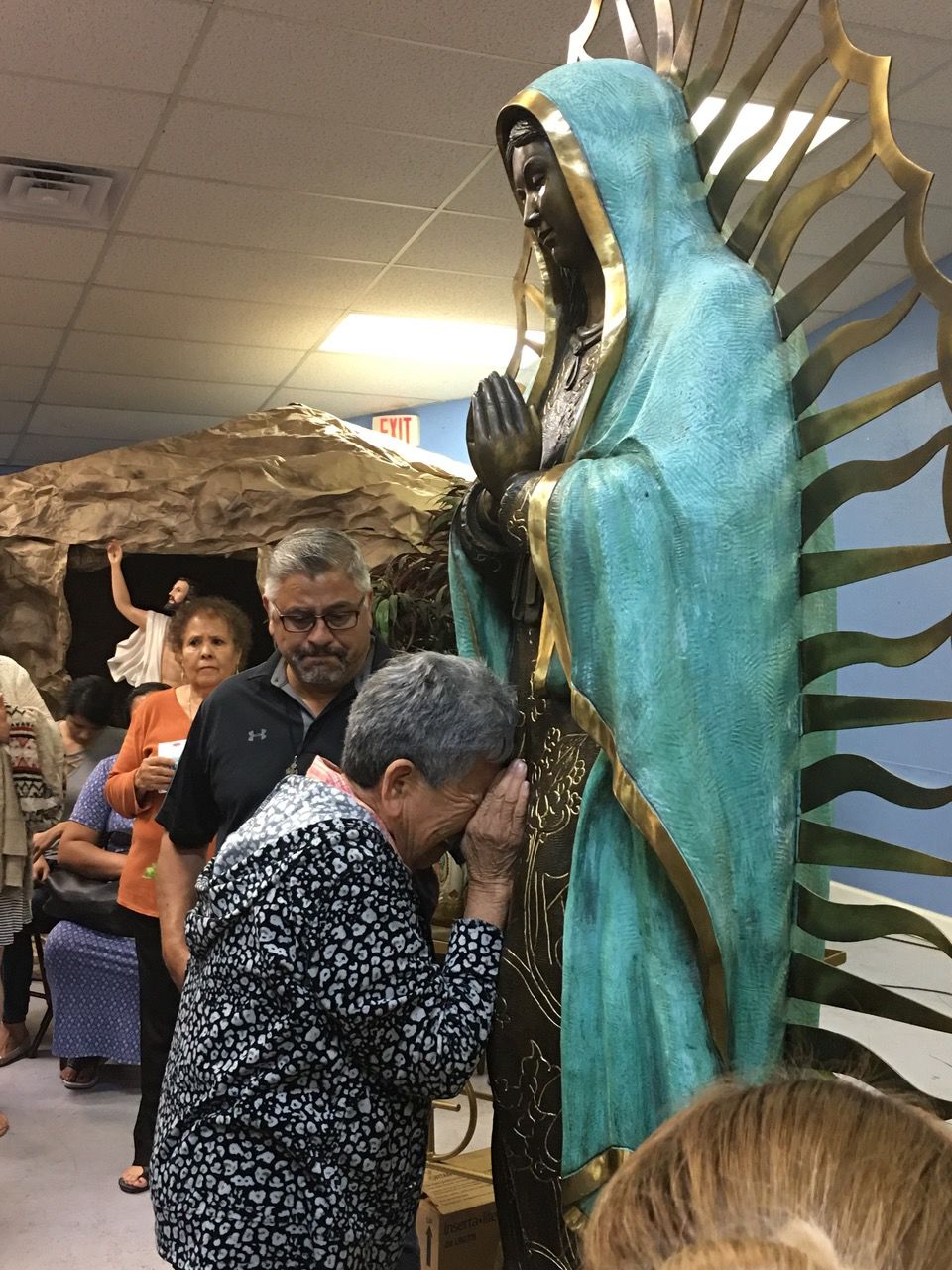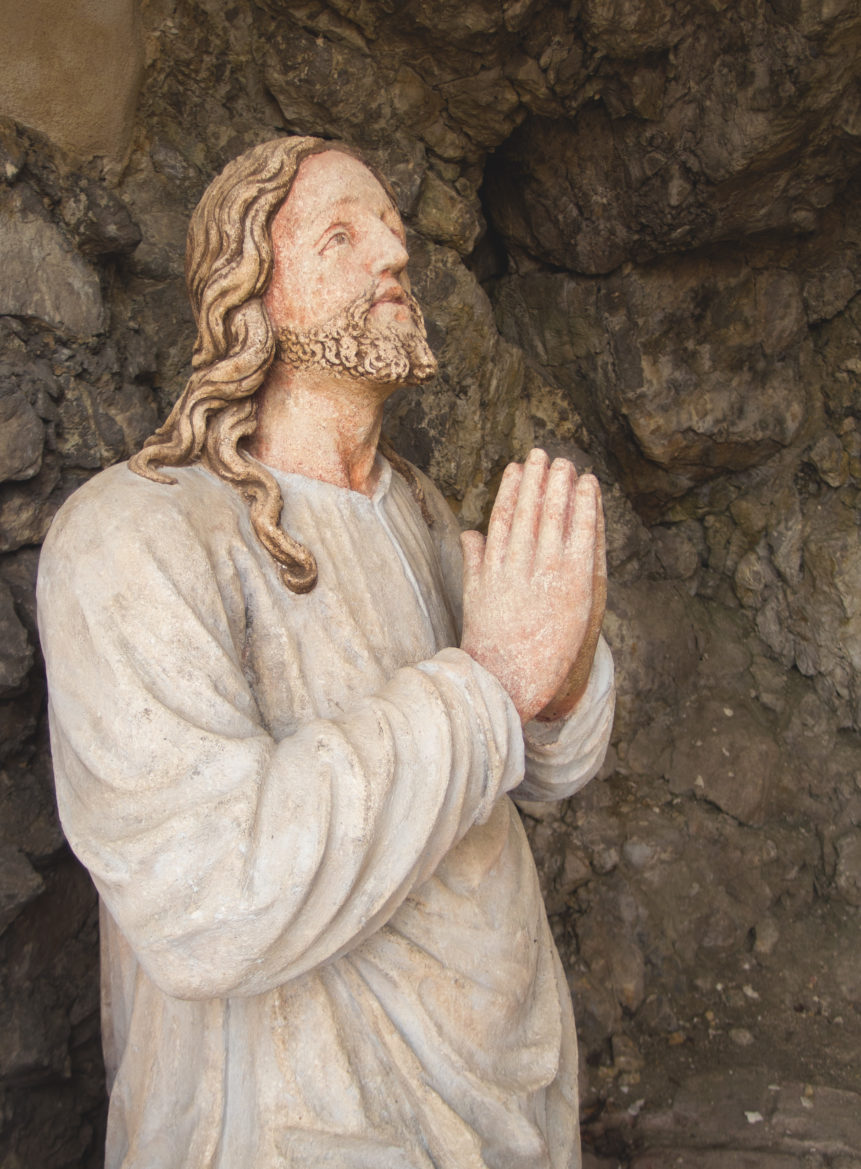✼ ҉ حسام الـבین شـ؋ـیعیان ҉ ✼
✐✎✐ وبلاگ رسمے و شخصے حسام الـבین شـ؋ـیعیان ✐✎✐✼ ҉ حسام الـבین شـ؋ـیعیان ҉ ✼
✐✎✐ وبلاگ رسمے و شخصے حسام الـבین شـ؋ـیعیان ✐✎✐/Jesus Christ/
In the middle of the 2nd century CE, Christian leaders (mostly bishops) later designated as Church Fathers, began writing apologia to Roman Emperors and others in defense of Christianity. As educated men in various schools of philosophy, they utilized philosophical concepts of the universe and terminology to accord Christian views of Jesus with philosophical claims. Thus, the elevation of Jesus of Nazareth from a Jewish wonder-worker to a source of all power in the universe.
Christianity is a monotheistic, deontological, grass-roots, Jewish sectarian movement that focuses upon the life, teachings, and mission of Jesus of Nazareth (also known as Jesus the Christ). It began in Jerusalem in Judea in the 1st century CE, and moved northward and westward in the Mediterranean region through the efforts and activities of Jesus' personally chosen disciples & apostles - Peter, Paul, James, and John (among others). Once a small, Messianic Jewish sect, by the 4th century CE, Christianity dominated all other religions in Greco-Roman society and spread throughout the Roman Empire even as far north as ancient Britain and possibly as far east as India. Unlike other Gnostic movements of the era, the Christian message was meant to be openly and honestly shared to anyone who would hear it - regardless of race, gender, economic, or social status. The narrative of Christianity is complex as are the early Christian doctrines, which are best understood in the cultural and historical contexts of the Christian movement and through the pivotal decisions and actions of its adherents.
Socially, this led to controversy and conflict with the ruling powers in Jerusalem, Judea, and Roman demesnes. Eventually, Jesus was arrested, tried, and convicted by the Sanhedrin under Caiaphas, the Jewish High Priest, and for treason in the Roman courts under Pontius Pilate, the Roman governor of Judea (although Jesus' Jewish enemies wanted him convicted of blasphemy). Ironically, in both instances, the trial of Jesus violated traditional, official Jewish and Roman jurisprudence for capital crimes, procedures, and protocol, ending with an unlawful sentence and subsequent execution by crucifixion, which was carried out by Roman soldiers on what later came to be called, “Good Friday.”
According to multiple eyewitness testimonies in the region (as detailed in the Gospels and the Epistles), through a supernatural resurrection by God, Jesus -miraculously alive and well - appeared to a variety of people, having perfectly performed his father's mission on earth. Somewhat ironic considering the Patriarchy of the era, Jesus' first appearance was to a woman - Mary Magdalene - who immediately ran and told the other Disciples about what she had seen and heard. Later encounters of Jesus included Mary, the mother of James; Salome; Joanna; James, the half-brother of Jesus; the lead Disciple Peter and eventually all of the remaining eleven Disciples (except for Judas who had committed suicide, earlier); and the Apostle Paul (formerly known as Saul of Tarsus) who would be later so instrumental in establishing Christianity in Europe. In fact, in Paul's First Epistle to the Corinthians, he records that over 500 people saw Jesus, the risen Christ, all at the same time, although some of them had already died by the time he wrote his second letter to Corinth (1 Corinthians 15:6, NASB).
After a 40-day period of visitation and confirmation that he had indeed risen from the dead as he said he would, Jesus left the earthly realm and ascended into Heaven, sending the Holy Spirit to guide and empower them, having already prepared and called his disciples to be teachers, guides, and proclaimers of a fulfilled Messianic promise of God's loving plan for salvation that was to be shared from Judea to all the known Gentile (non-Jewish) world.
With the command of Jesus to “Go therefore and make disciples of all the nations, baptizing them in the name of the Father and the Son and the Holy Spirit, teaching them to observe all that I commanded you; and lo, I am with you always, even to the end of the age” (Matthew 28:19–20, NASB), the followers of Jesus began sharing the good news of the resurrected Messiah (the Christ, gr.) - along with Jesus' earlier ethical admonishments of perfect love of God and neighbor.
Although the Pharisees and Jewish leaders considered the dangerous influence of Jesus to be quelled with his execution (especially with the threat/warning of crucifixion for embracing such beliefs), the Christian message continued to be as appealing and inviting as ever, and the movement grew, exponentially. Moreover, whereas oppressive and politically controlling leaders of Judaism continued in their reactionary ways, the early Christians offered inclusivity and freedom to those who wished to join in “The Way” (as the movement was sometimes called).
And all those who had believed were together and had all things in common; and they began selling their property and possessions and were sharing them with all, as anyone might have need. Day by day continuing with one mind in the temple, and breaking bread from house to house, they were taking their meals together with gladness and sincerity of heart, praising God and having favor with all the people. And the Lord was adding to their number day by day those who were being saved (Acts 2:44–47, NASB).
Not surprisingly, as the number of Jesus disciples rose, the Jewish leaders who had earlier been threatened by Jesus' message and influence upon a society which they wanted full hegemony, worried the Jesus movement could reignite, and turned their criticisms and persecutions upon Jesus' disciples and followers, many of whom fled the area to safer, more receptive areas (at least, initially). Still, many early Christian leaders bravely stayed in Jerusalem and Judea to speak their message of Christian love and salvation, leading to public abuse by authorities determined to extinguish this dangerous sect of Messianic Judaism. The Apostle Luke records,
This Christian zeal energized many to follow; however, it energized many on the other side of the argument to more serious efforts. Thus, the Apostle Stephen is the first recorded martyr of the Christian movement (Acts 7, NASB), and based upon extra-biblical accounts of the time, others soon thereafter followed Stephen's demise. The Disciple Andrew was crucified on an 'X' in Greece; the Disciple Matthew was killed by the sword in Ethiopia; the Disciple Bartholomew (also known as Nathanael) was whipped to death in Armenia; the Disciple James Zebedee was beheaded in Jerusalem; the Disciple Thomas was stabbed by a spear in India; the Disciple Jude was killed by arrows during his missionary work; the replacement Disciple, Matthias was stoned and beheaded for his faith; the Apostle John (and Gospel writer) was boiled in oil but somehow survived; the Apostle Barnabas was stoned to death in Salonica; the Gospel writer, John Mark, was dragged to death by horses through the streets of an unnamed Egyptian city; James the Just was thrown over a cliff, somehow survived, but then was immediately clubbed to death; the leader of the Disciples, Peter, was crucified upside down in Rome under the Emperor Nero; and the Apostle Paul was beheaded under the persecutions of Nero.


Jesus Christ
In the Old Testament, God’s people of Israel knew of God as father, but only in a general sense. For instance, since God is creator of all things, he can be called “father.” Jesus Christ, however, reveals an entirely distinct fatherhood of God: he reveals, as St. Paul writes, “Abba” (see Romans 8:15), abba being a Syriac word that signifies “my father.”
Abba is a word that intentionally relates familial imagery, a word of intimacy. In other words, God is not just father in the abstract sense as creator, but in a familial, intimate manner with his creation. Furthermore, this Abba is also not just calling upon God as father in a familial, intimate manner, but calling upon the Person of God the Father, First Person of the Most Holy Trinity. For in Christ, we not only get to call God Abba, but we also receive the revelation of the paternity of God the Father from Jesus the Son, the Second Person of the Most Holy Trinity, who is eternally begotten of the Father.
We read in John 1:18, for example, that “No one has ever seen God; the only-begotten Son, who is in the bosom of the Father, he has made him known.” Or as we read in Matthew 11:27 and Luke 10:22, “All things have been delivered to me by my Father; and no one knows the Son except the Father, and no one knows the Father except the Son and any one to whom the Son chooses to reveal him.”
How, then, does Jesus reveal the Person of God the Father? Let us look at 10 ways (among others!) that the revelation of Jesus draws us into the mystery of his filial relationship with God the Father.
The Incarnation is the external prolongation and extension of the procession of the Son. As we read in John 8:42, “Jesus said to them, ‘If God were your Father, you would love me, for I proceeded and came forth from God; I came not of my own accord, but he sent me.’” The justice and mercy of the invisible Father and his love and providential care of his beloved creatures has a face in Christ because of the Incarnation.
As Jesus says to Mary and Joseph upon their reunion, “Did you not know that I must be in my Father’s house?” A Father different, of course, from St. Joseph himself, who is but the foster-father of our Lord.
We read in Mark 1:14 that “after John was arrested, Jesus came into Galilee, preaching the gospel of God.” This preaching is most famously captured by the Sermon on the Mount, which emphasizes the fatherhood of God. In fact, God is called “Father” in the sermon 17 times. Why emphasize God’s fatherhood in the sermon? Because Jesus is God the Son, who is calling us to be sons of God ourselves, through him and with him and in him.
Not only do the words of Jesus testify to God the Father, but so, too, do his works. The healings, miracles, and all other acts by Jesus show forth his splendor as the Son of God. As our Lord himself says, “If I am not doing the works of my Father, then do not believe me; but if I do them, even though you do not believe me, believe the works, that you may know and understand that the Father is in me and I am in the Father.”
We see in Christ’s interior life that his life of prayer is all about his turning as Son to the Father and the Father turning likewise in testifying to his Son. In both cases of the Baptism and Transfiguration, for example, Jesus Christ is praying, and as he is doing so, a voice from heaven proclaims him the beloved Son. By uniting ourselves to the interior life of Christ, we pierce the heavenly mysteries.
Nothing reveals the love of the Father so much as the Passion of Christ, which shows that the Father’s infinite love for mankind doesn’t even spare his only-begotten Son. The Crucifixion especially signifies the love that the Father has for the world, a love which sends his only begotten Son to death to redeem us of our sins. Jesus’ own obedience to the will of the Father, captured no more powerfully than in the agony of the garden, shows forth his own union of will with the Father’s.
Just prior to his ascension into heaven, Jesus gives his Catholic Church her mission: to teach all nations and baptize them. The formula for baptism itself reveals to us the three persons in one God: when we are baptized into the passion, death, and resurrection of Christ, it is in the name of the Father and of the Son and of the Holy Spirit. The three persons in God are distinct, yet consubstantial, coequal, and coeternal.
We read in Acts 2 of the first Christian Pentecost 50 days after Easter, which marks the birth of the Church. The Holy Spirit descends upon the faithful as the founding gift and soul of the Church. What does this have to do with God the Father? Everything, for Jesus makes it clear that the Holy Spirit is the promise of the Father (see Luke 24:49; Acts 1:4-5).
The revelation of God the Father is made even more personal to us with the infusion of the theological virtue of faith into our intellect. For as Christ speaks in the Gospels, faith is eternal life already begun: “He who believes in the Son has eternal life” (Jn 3:36). Note that he says “has eternal life,” not “will have.” But what is eternal life if not the knowledge and love of the Triune God? As Christ says, “And this is eternal life, that they know thee the only true God, and Jesus Christ whom thou hast sent” (Jn 17:3).
The Christian life of faith, hope, and charity is most fully perfected in our conformity to Christ crucified, for the savior demands that we pick up our cross as he did. But this carries with it a great promise, as well, of coming before the Father victoriously clad in our suffering: “So every one who acknowledges me before men, I also will acknowledge before my Father who is in heaven” (Mt 10:32).
These are not the only ways in which our Lord reveals the Father, but these ten ways capture a comprehensive, if only brief, overview. Jesus came to do the will of the Father (John 6:38), and the will of the Father he did indeed. It is through Jesus and his obedience to the will of Father, culminating in his Passion, death, and resurrection, that we ourselves return to our Father in heaven.
Jesus Christ is the designation of Jesus of Nazareth (d. c. 30 CE), who was an itinerant Jewish prophet from the Galilee in northern Israel. He preached the imminent intervention in human affairs by the God of the Jews, when God would establish his kingdom on earth. The proper name Jesus was Greek for the Hebrew Joshua ("he who saves"). 'Christ' (Greek: Christos) was translated from the Hebrew meshiach (messiah). 'Messiah' meant "anointed one" where anointing was part of the coronation ritual by God for Jewish kings. "Jesus the Christ" became shortened over time to Jesus Christ, beginning with the letters of Paul in the 50s and 60s of the 1st century CE. A popular title became his designation as the "son of God", both in function and nature.
The Jews were an ethnic group of various tribes who lived mainly in Israel but also settled in communities around the Mediterranean Basin. Collectively, they were known as the nation of Israel. They shared many religious elements with their neighbors but differed by having distinct dietary laws, practicing circumcision, and observing Sabbath (a day of rest every seven days). The other major difference was that while recognizing the various deities in the universe, they were only permitted to offer sacrifices to their God. This was done at the Temple complex in Jerusalem.
Over the centuries, the Jews had suffered the Assyrian Invasion (722 BCE), the destruction of Jerusalem and the Temple by the Babylonians (587 BCE), the occupation by the Greeks (167 BCE), and then Rome. When the Roman general Pompey (106-48 BCE) conquered the East, including Israel (63 BCE), he established client-kings who were responsible for keeping the peace, carrying out Roman dictates, and collecting taxes. Herod the Great was named King of the Jews (r. 37-4 BCE), and although he renovated the Temple complex in Jerusalem, he was reviled by many for his relationship with Rome.
Traditionally, the books of Jewish prophets (oracles) had blamed these events on the sins of the people, largely idolatry (worship of other gods). However, these prophets also offered a message of hope, known as Jewish Restoration Theology. They claimed that at some future time, God would intervene in history one final time to restore the nation of Israel and God would raise up a messiah to lead the armies of God against Israel's oppressors.
By the 1st century CE, there were many Jewish groups (sects) that maintained the traditions of Israel but varied in their lifestyles and attitude toward Rome and infamous for their debates among each other. Israel produced several charismatic messiah claimants, all calling for God's intervention against Roman rule. These men stirred up the crowds during religious festivals in Jerusalem, calling on God to destroy the Romans and establish his kingdom. Rome's response was to arrest and execute both the leader and his followers. The usual method of execution was crucifixion, the Roman punishment for treason as preaching a kingdom that was not Rome threatened the prosperity and stability of the Roman Empire.
The followers of Jesus of Nazareth became one more sect of Jews among many at the time. During the 20s CE, he proclaimed the message: "Repent, for the kingdom of God is at hand" (Mark 1.15). The claim was presented as "good news"; thus the later Anglo-Saxon term of 'gospel'.
Only two gospels, Matthew and Luke, present a nativity story, or the details surrounding the birth of Jesus. The dates are problematic. Matthew claimed that Jesus was born roughly two years before the death of Herod the Great (4 BCE), while Luke claimed he was born during the governorship of Quirinus in Syria (6 CE). Both relate that his mother, Mary, was impregnated by the spirit of God, resulting in the virgin birth.
All the gospel writers place the ministry and death of Jesus during the reign of the Roman procurator, Pontius Pilate. We know that Pilate reigned from 26-36 CE. By agreement, the common date for the death of Jesus falls between 30-33 CE.
The ministry of Jesus began after he was baptized by a man known as John the Baptist. Baptism simply meant dunking. John was symbolically utilizing a water ritual after someone had repented of their sins. The ritual of baptism was one of the earliest Christian rituals and became part of the initiation of believers to enter the community.
The ministry of Jesus began after he was baptized by a man known as John the Baptist. Baptism simply meant dunking. John was symbolically utilizing a water ritual after someone had repented of their sins. The ritual of baptism was one of the earliest Christian rituals and became part of the initiation of believers to enter the community.
Mark (the earliest gospel, c. 70 CE), presented Jesus as a charismatic exorcist, an itinerant preacher understood to have special gifts from God, operating through God's spirit, like the Prophets of Israel. Mark's Jesus traveled through the small towns and villages of Galilee, bringing his message that the prophets' prediction of the final days was imminent. According to Mark, Jesus taught through parables, which utilized everyday concepts and details to teach through examples. He called twelve disciples (students) to constitute his inner circle, symbolizing the restoration of the twelve tribes of Israel.
Beginning with Mark, the gospels relate that the Jewish leadership (mainly the Pharisees, scribes, and ultimately the Sadducees who were in charge of the Temple) was opposed to the teachings of Jesus from the very beginning of the ministry. Jesus and his disciples traveled to Jerusalem to celebrate the Passover festival. Jesus then went to the Temple Mount and disrupted the services of the animal-sellers and the money-changers. According to Mark, it is this event that led to the death of Jesus. After celebrating the Passover meal (which would become the Christian ritual of the Last Supper), Jesus and the disciples walked to the Mount of Olives to pray. Mark related that it was there that one of his disciples, Judas, betrayed Jesus to the Jewish authorities so that he was arrested.
The gospels report a series of evening and morning trials in front of different groups (the Sanhedrin, the ruling Council of Jerusalem, the high-priest), and Jesus was condemned for blasphemy. Jesus was innocent of this charge, but the gospel writers knew how Jesus died and used blasphemy as a plot device to hand him over to Rome.
Jesus was executed on a Friday afternoon. Saturday was the Sabbath, which began at sunset on Friday, and so the women could not go to the tomb until Sunday morning to finish the funeral rituals. It was then that his followers claimed that the body of Jesus was gone, that he had been raised from the dead by God. In consequence, the claim was made that Jesus was bodily ascended into heaven.
All four gospels had to deal with some problems in their claims that Jesus of Nazareth was the promised messiah of the Jewish Scriptures. Not only was Jesus dead, but he died by crucifixion, as a traitor to Rome. And the preaching of the imminent kingdom of God had not materialized. Two responses arose in the communities of his followers. In chapters 53-54 of the Prophet Isaiah, we have the description of a "righteous servant" who is tortured, suffers, dies, and then is elevated to share the throne of God. In the historical context of the Prophet Isaiah, the suffering servant stood for the nation of Israel. Early Christians now claimed that Isaiah was predicting that Jesus of Nazareth was this suffering servant.
The problem of the fact that the kingdom of God did not materialize when Jesus was on earth was resolved by another Christian innovation. This is known as the parousia or second appearance. Jesus, now in heaven, would return at a future date, and then the remaining elements of the reign of God would be manifest on earth. This conviction remains central to Christianity, where the details were outlined in the Book of Revelation by John of Patmos.
After receiving a vision of Jesus (now in heaven), Paul, a Pharisee, joined the movement and began preaching "the good news" in various cities in the Eastern Roman Empire. Within the historical context of Paul's communities, however, this was not a new religion. This was Judaism with a twist. Paul established two-tiered communities made up of Jews and Gentiles, but both believing in the fulfillment of eschatological teachings of the Prophets. Much of his advice in the letters was directed toward the followers of Jesus in terms of how to live in the interim before he returned to earth. Paul expected his generation to be the last of the old order until the transformation of the universe took place through Christ.
In Paul's letter to the Romans, we find the first reference to what would constitute the understanding of the death of Jesus as atonement. Atonement referred to a sacrificial ritual that would fix or atone for a violation against a commandment of God. In Romans 5, he applied the analogy of "first man, last man." Adam, the first man, sinned, and his punishment was death for his descendants. Jesus, the last man, died and brought eternal life. This became understood as the rationale for the death of Jesus of Nazareth: Jesus died not simply for our sins but for the punishment of our sins, physical death. To be saved through faith (loyalty) to Jesus, meant that when Jesus returned, his followers would be transformed into spiritual bodies (no longer flesh) and co-rule with Christ on earth (1 Corinthians 15). After the first generation did indeed die, the concept was adjusted to the idea that though we would continue to die, nevertheless, believers could enjoy an afterlife in heaven.



















